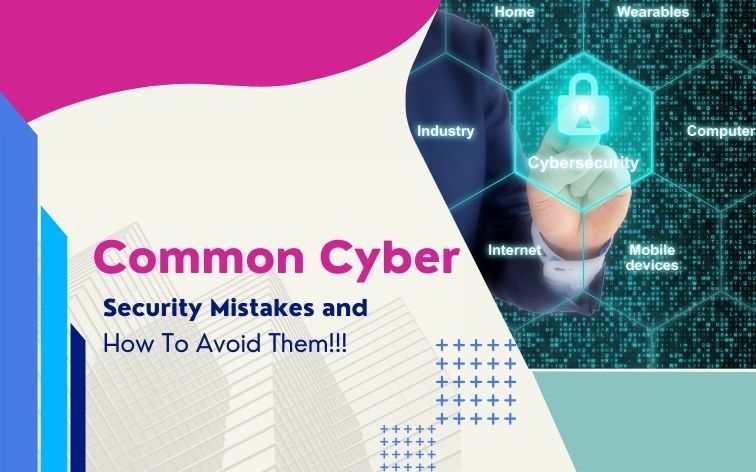
Table of Contents
Introduction to Cybersecurity
Cybersecurity is the practice of safeguarding digital systems, networks, and data from unauthorized access, theft, or damage. In an era where digital transformation drives industries, top of the line network security protocols are no longer optional- they are essential. For professionals in BE Computer Science Engineering or Computer Science and Engineering (CSE), understanding cyber security principles is critical to designing resilient infrastructures. However, even with advanced tools, human errors and outdated practices often expose organizations to risks. This blog explores five common cyber security mistakes, supported by real-world incidents, and provides actionable strategies to mitigate them.
Understanding Cybersecurity Threats
Modern cyber security spans multiple domains, including network security, application protection, and data integrity. Threats like ransomware, phishing, and insider attacks exploit vulnerabilities in these areas. For instance, the 2023 Mailchimp breach demonstrated how social engineering can compromise even tech-savvy organizations. Professionals in Computer Science and Engineering (CSE) must prioritize threat awareness to build systems that preemptively counter these risks.
Five Common Cyber security Mistakes and How You Can Avoid Them
1. Cloud Misconfigurations
Threat: Cloud misconfigurations refer to errors or oversights in the setup of cloud environments that can lead to security vulnerabilities, data breaches, or compliance issues. These misconfigurations often occur due to human error, lack of network security best practices, or inadequate monitoring. For computer science and engineering (CSE) professionals, understanding these risks is crucial in securing cloud infrastructures.
Common Types of Cloud Misconfigurations in Network Security
Publicly Exposed Storage Buckets
One of the most common cloud misconfigurations is publicly exposed storage buckets. Sensitive data stored in cloud storage services like AWS S3 or Google Cloud Storage may be unintentionally left open to public access, making it vulnerable to cyber threats.
Attackers can easily scan for such misconfigured storage and exploit them to steal confidential data. Ensuring proper access controls and permissions is crucial to mitigating this risk.
Excessive Permissions and Unrestricted Access
Overly permissive IAM roles and policies grant unnecessary access to users or applications, increasing security risks. When access controls are not properly configured, unauthorized users can gain entry to critical resources, leading to potential data leaks or system compromises. Similarly, misconfigured firewall rules that allow unrestricted ingress and egress traffic can expose cloud instances to unauthorized access.
Lack of Encryption
Storing or transmitting sensitive data without proper encryption leaves it vulnerable to interception and misuse. Without encryption, hackers can easily exploit data during transmission or while it is at rest in the cloud. Encrypting sensitive data using robust encryption protocols ensures that even if unauthorized access occurs, the data remains protected. Cloud providers offer built-in encryption features, and organizations must enforce encryption policies to strengthen network security.
Disabled Logging and Monitoring
Security incidents often go undetected due to disabled or improperly configured logging and monitoring tools. Cloud services like AWS CloudTrail and Azure Monitor help track activities and detect anomalies, but when these tools are not enabled, organizations lack visibility into potential security threats.
Unpatched or Outdated Services
Running outdated cloud services or unpatched software is a common misconfiguration that can lead to security vulnerabilities. Cybercriminals actively exploit known vulnerabilities in older software versions to gain unauthorized access. Regular patching and updating of cloud resources ensure that security loopholes are fixed and that cloud systems remain resilient against attacks.
Preventing Cloud Misconfigurations in Network Security
Organizations should take a proactive approach to prevent cloud misconfigurations by regularly auditing cloud configurations using network security tools. Automated security compliance checks through platforms like AWS Config, GCP Security Command Center, or Azure Security Center can help maintain a secure environment. Implementing strict access controls, enforcing encryption for data at rest and in transit, and educating computer science and engineering (CSE) students and professionals on cloud security best practices are essential for preventing cloud-related security breaches.
Case Study: Pegasus Airlines (2022)
In 2022, Pegasus Airlines left an AWS S3 bucket unsecured, leaking 6.5 TB of data, including flight navigation charts, crew details, and proprietary code. The Pegasus data breach resulted from untrained IT staff neglecting basic network security practices. Though no direct attack occurred, the incident violated Turkey’s data laws, risking $183,000 fines.
Consequences: Reputational damage, legal penalties, and potential misuse of exposed data.
2. Phishing Attacks
Phishing attacks have become one of the most prevalent threats in cyberspace, targeting individuals and organizations to steal sensitive information. These attacks manipulate users into revealing personal details, such as login credentials or financial data, by disguising malicious emails, websites, or messages as legitimate sources. With the increasing dependence on digital communication, phishing remains a significant concern in network security and a critical topic for students and professionals in computer science and engineering (CSE).
Threat
Phishing attacks pose a major risk to individuals and businesses alike. Cybercriminals use deceptive emails and fake websites to trick users into sharing confidential information. These attacks often exploit human error, making them difficult to prevent entirely. Organizations that fail to implement strong network security measures are at a higher risk of data breaches. For those pursuing a career in computer science engineering, understanding the evolving tactics of phishing attacks is essential to developing effective security solutions.
Case Study: Mailchimp (2023)
In 2023, the email marketing platform Mailchimp fell victim to a sophisticated phishing attack. Hackers gained unauthorized access to employee credentials through a social engineering scheme, allowing them to breach the system and steal customer data. This incident highlights how even well-established companies can become victims of phishing when network security measures are not strictly enforced. For students in computer science and engineering (CSE), this case study serves as a real-world example of the dangers of phishing and the importance of cybersecurity awareness.
Consequences
The consequences of phishing attacks can be severe, leading to financial losses, identity theft, and reputational damage. Businesses may face legal penalties if customer data is compromised. In computer science engineering, professionals must design and implement security systems that protect users from such attacks. Without adequate security measures, phishing incidents can disrupt operations and lead to long-term financial instability.
Solution
Preventing phishing attacks requires a combination of technology and user awareness. Organizations must deploy email filtering systems, multi-factor authentication, and real-time threat detection to enhance network security. Additionally, educating employees and users about phishing tactics can reduce the likelihood of falling victim to these scams. For students in computer science and engineering (CSE), learning about cybersecurity best practices is essential.
3. Insider Threats
Insider threats pose significant challenges to network security, especially within the realm of computer science and engineering (CSE). These threats arise when individuals within an organization misuse authorized access, leading to data breaches and system vulnerabilities.
Case Study: Yahoo (2023)
In February 2022, Yahoo accused former research scientist Qian Sang of stealing valuable intellectual property. Sang allegedly downloaded approximately 570,000 files, including sensitive information and the source code of AdLearn, Yahoo’s real-time ad purchasing engine. This incident underscores the critical importance of robust network security measures in the field of computer science and engineering.
Consequences
The repercussions of insider threats are severe. Organizations may suffer financial losses, reputational damage, and compromised data integrity. In Yahoo’s case, the potential loss of competitive advantage in the online advertising space highlighted the vulnerabilities even tech giants face. Such incidents emphasize the need for stringent cybersecurity protocols within computer science and engineering disciplines.
Solution
To mitigate insider threats, organizations should implement comprehensive security strategies. Regular monitoring of user activities, strict access controls, and continuous employee training are essential. Emphasizing cybersecurity within computer science and engineering curricula can equip future professionals with the skills to identify and prevent such threats, thereby strengthening overall network security.
4. Ransomware
Ransomware is a type of malicious software that encrypts a victim’s data, demanding payment for decryption. It poses a significant threat to individuals and organizations, leading to data loss and operational disruptions.
Case Study – WannaCry (2017)
In May 2017, the WannaCry ransomware attack affected over 300,000 computers across 150 countries. It exploited a vulnerability in Microsoft Windows, encrypting data and demanding ransom payments in Bitcoin. The attack caused widespread disruption, particularly in sectors like healthcare and finance.
Consequences
Victims of WannaCry faced significant operational disruptions, financial losses, and data breaches. The attack highlighted the critical importance of timely software updates and robust cybersecurity measures.
Solution
To mitigate ransomware threats, it’s essential to regularly update software, implement strong security protocols, and maintain comprehensive data backups. Educating users about phishing and suspicious links can also prevent ransomware infections.
5. Weak Passwords
Weak passwords are easily guessable or commonly used credentials that can be exploited by attackers to gain unauthorized access to systems. They pose a significant security risk, leading to data breaches and system compromises.
Case Study – Colonial Pipeline (2021)
In May 2021, the Colonial Pipeline suffered a cyberattack due to a compromised password, leading to a significant fuel supply disruption in the U.S. The incident underscored the dangers of weak password practices and the importance of robust authentication measures.
Consequences
The Colonial Pipeline attack resulted in operational shutdowns, financial losses, and highlighted vulnerabilities in critical infrastructure. It emphasized the need for stringent password policies and cybersecurity awareness.
Solution
Implementing strong, unique passwords, utilizing multi-factor authentication, and regularly updating credentials are essential steps to prevent unauthorized access. Regular security audits and user training can further enhance protection against threats arising from weak passwords.
Conclusion
Cybersecurity threats like cloud misconfigurations and ransomware demand robust network security frameworks and skilled professionals trained in BE Computer Science Engineering. Taking this in account, Mahalakshmi Tech Campus has updated curricula for their Computer Science and Engineering and CSE(Cyber Security) courses. By integrating real-world lessons into Computer Science and Engineering (CSE) education, organizations can build proactive defenses. Prioritizing these strategies ensures safer digital ecosystems in an increasingly connected world.




